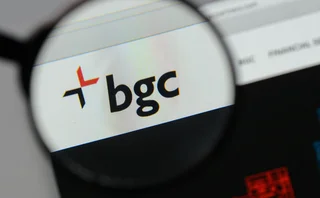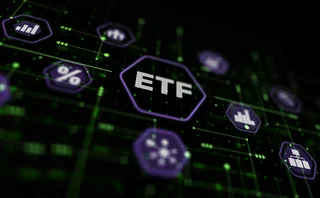One step forward, two steps back—European regulation grapples with the same old problems
Stop me if you've heard this one before...

“Europe can only be built together.” This was the mantra espoused by a fresh-faced Angela Merkel in a 2005 interview with the Financial Times, a matter of months before she was elected Chancellor of Germany. She and then UK Prime Minister Tony Blair had to overcome their political differences, she said, because Europe could only be run on a principle of unanimity.
Almost 20 years later, it feels like little has changed. Merkel may have come and gone, but her successor, Olaf Scholz, is still struggling to keep European leaders united. And although Britain has left the EU, Hungary and Poland have taken on the role of wrangling over funding with aplomb.
Still, Merkel’s truism holds: Europe can only be built together. Without determined cooperation, it is very difficult to create meaningful change in the bloc. In 2023, this fact proved to be a thorn in the sides of public officials and market players hoping to instigate significant reform of Europe’s market structure. Almost every effort to strengthen the EU’s capital markets has fallen short when confronted with resistance or apathy from lobbies, member states, or politicians.
Take the consolidated tapes (CTs), for example. These crucial market infrastructures, which provide investors with a live stream of trade data from venues across the continent, have been in the making for decades. The foundations were laid by the Markets in Financial Instruments Directive, which tried to bring more transparency to markets by introducing greater transaction reporting requirements. In 2018, Mifid II gave new impetus to the project by specifying “it is essential that an effective and comprehensive consolidated tape is in operation as soon as possible.”
This is not a controversial statement. The US set up its first CT (for equities) in 1976, giving investors a holistic view of the activity on markets across the country. And while Europe’s complex and fragmented market landscape means that replicating the American blueprint is easier said than done, all sides agree—at least in theory—that a consolidated tape is both feasible and desirable to help bring transparency and foreign capital to European markets.
But developments toward the creation of the tapes in 2023 only served to underscore the circularity of the European legislative process.
The year started off on an optimistic note, when Europe’s co-legislators (Commission, Parliament, and Council) entered a negotiation called a “trilogue” in an effort to thrash out a deal on the principle of what future tapes should look like.
The biggest point of contention was how much pre-trade pricing data should be recorded on the equities tape. In its initial proposal, the Commission suggested that only post-trade data should be included, but the Parliament also called for pre-trade data on the top five best levels of bids and offers. The Council proposed a snapshot pre-trade tape on which data becomes available only after trades are executed.
Exchanges invest in forming prices that are the valuation benchmark everybody uses
Rainer Riess, Federation of European Securities Exchanges
Some exchanges—particularly the smaller ones which rely heavily on market data revenues—pushed back against the inclusion of significant pre-trade data, protesting that it would undermine the business they win from financial institutions by providing them with real-time data feeds.
Rainer Riess, director general of the Federation of European Securities Exchanges, told WatersTechnology during the trilogues that losing their pre-trade data revenue could undermine an exchange’s ability to provide other services.
“Exchanges invest in forming prices that are the valuation benchmark everybody uses,” Riess said. “And exchanges fulfill other functions, such as the listing function [and] market surveillance that may suffer if less revenue is available to finance such services, possibly threatening the viability of smaller markets.”
Then, exactly halfway through the year, the three legislative bodies clinched a deal dubbed “the Swedish Compromise”. To resolve the pre-trade question, lawmakers agreed on a real-time, anonymized European best bid and offer. This reduces the scope for arbitrage, as high-frequency shops cannot immediately work out where a given security is trading for the lowest price. But the same can be said of average users of the tape, reducing the infrastructure’s usefulness as a tool for market participants monitoring their brokers’ execution.
The Swedish Compromise was a bittersweet moment. Here, at last, it felt like European decision-makers were pulling together, finding ways to overcome the political and technical problems that have held back the creation of a tape for far too long. On the other hand, end-users of the tape complained that this had been a missed opportunity.
In rushing through a deal, Europe failed to come up with anything more ambitious than the system America has had for decades. The omission of pre-trade data, they said, could also undermine the viability of the equities tape—who would want to build a system capable of collecting pre-trade pricing information from European venues only to filter out the identities of those venues? And who would want to subscribe to such a tape, when most institutions can get more exhaustive data for price formation directly from the exchanges?
That second point may be overstated. An end-user of market data from a European bank told me that a reliable and comprehensive top-of-book pre-trade feed would still be useful for purposes like testing algorithms and developing future trading strategies, at the very least.
But the questions about who would want to build the increasingly elaborate tapes turned out to be well founded. A group of banks and asset managers led by consultancy firm Adamantia expressed an interest in building the equities tape at first, but said they would not bid to become the consolidated tape provider (CTP) if pre-trade data was not included. That leaves one public contender for the role of equities CTP: the European exchanges themselves, which have incorporated as a joint venture in a bid to build the future tape. Data and technology providers BigXYT and TransFICC have also expressed an interest in building the tape.
Competition for the role of CTP looks equally muted on the bonds side. One very early bid came from the three major fixed income trading venue operators: Bloomberg, MarketAxess, and Tradeweb. WatersTechnology broke the news that the big three were planning a consortium (dubbed Cassette) as early as November 2021, and it was positively received by sources, who said that the rivals had both the necessary data and technical expertise to build a tape. But the Cassette venture collapsed at the end of 2023, with the members citing “various developments” including “uncertain outcomes around product definitions and structural complexities”.
Shortly afterward, technology provider Etrading Software announced that it will bid to become the CTP for the bonds tape, with CEO Sassan Danesh writing, “We do not face the challenges of Cassette (managing consortiums and dealing with conflicts of interest are hard)”. Technology provider Ediphy has also expressed an interest in building the tape, as has Finbourne, which had been the tech partner for the Cassette consortium.
At the end of the year, then, there was still only one public bidder for the role of bonds CTP (albeit a different one from the start of the year). And in spite of the Swedish Compromise, debates about the precise details of the future tape were still rumbling on in the so-called “technical trilogues”.
Then, in the final days of 2023, just as the holidays were getting started, the European Securities and Markets Authority came out with one last surprise. In an unassuming update for prospective bidders for the role of provider, Esma smuggled in a preliminary date for the selection of a bonds CTP: Q4 2025. “Only 18 years after Mifid,” joked one industry expert on LinkedIn. “Perhaps a few more consultations are in order…”
Silver linings
Now, I know what you’re thinking. It’s not a good look for a Brit to harp on about the shortcomings of European bureaucracy. And to give credit where credit’s due, Europe did record some major legislative milestones in 2023.
It became the first jurisdiction in the world to draw up comprehensive rules governing the use of AI, for example. Draft regulation on the AI Act was agreed upon by the Council and Parliament in December, creating a classification system that sorts all AI products into one of four risk categories. The highest-risk systems will be banned outright, and products in the third risk level will have to pass a conformity assessment and audit before entering the market.
Although the strict rules for high-risk AI may seem like the big news here, it’s the implications for the safer AI systems that matter most for financial markets. According to the draft regulation, AI tools that are categorized as lower risk will have correspondingly light rules to follow. They might have to remind users that content was generated by AI, for example.
Market participants say that this low-touch approach combined with a clear system of risk classification will encourage greater AI innovation and uptake in the EU. One banker even suggested that the UK—which is now scrambling to draw up its own AI rules—is at risk of becoming a sort of Wild West, where companies test their fledgling AI tools before taking them to the more regulated EU.
Another bright spot was the agreement struck between the Council and Parliament on the revised Markets in Financial Instruments Regulation. After the two legislative bodies spent more than a year deciding their exact positions on the Mifir review, which is designed to make EU markets more competitive, they arrived at a compromise within just two months of opening negotiations. In addition to agreeing on the initial details for the consolidated tapes, the proposal will ban payment for order flow—the practice of market-makers paying brokers kickbacks for the right to execute their trades.
The Mifir review deal also agreed to harmonize Europe’s deferral regimes for post-trade transparency in non-equity instruments. Currently, member states have some freedom to choose how long market participants can wait after a trade before publishing the details of the transaction.
On the other hand, the proposal by the Council and Parliament suggests that all market participants across Europe should report their trades within the same time frame, and that this should be “as close to real time as possible”. But while there is no question that this will make the information provided by a future consolidated tape more useful, compliance professionals will be less than thrilled that the changes are due to come into force only 21 days after the finished text is published (which should be in the first quarter of 2024).
What to watch
In fact, 2024 promises to be another bumper year for watchers of European regulation. Lawmakers and regulators both have some tough decisions to make.
Many of those decisions will be driven by the need to respond to changes outside of Europe, however. Most notably, Esma has just closed its consultation on shortening settlement cycles, and is due to publish a feedback report this year with recommendations for Europe’s next move.
The US and Canada are set to make the shift to a one-day settlement window in May—a gear change that WatersTechnology’s Nyela Graham warns won’t be easy. Reluctant to lag behind the North American markets, Europe appears to have expedited its own plans. Sources told me that Esma’s initial proposal could see a one-day—or even same-day—settlement window introduced as early as Easter 2026.
But Europe’s post-trade landscape is an entirely different beast to that of the US or Canada. It has multiple central securities depositories (CSDs) and central counterparty (CCP) clearing houses, and it hasn’t taken the preparatory measures that the US has in place, such as requiring transactions to be affirmed on the day of the trade.
This would make any attempt to implement T+1 in the EU a good deal more complicated than in the US. Currently, only around 70% of transactions in Europe match at the CSD by the end of trade date. Post-trade experts say that number has to be pushed up to the high nineties before a change to T+1 settlement can realistically be considered.
Similarly, the EU will have to decide whether to stick with its initial adoption date for the Fundamental Review of the Trading Book, currently planned for January 2025. A hangover from the 2008 Global Financial Crisis, FRTB is designed to ensure that banks can absorb potential trading book losses when faced with extreme market conditions. Apart from being a headache for risk managers and a huge expense for banks—the Basel Committee on Banking Supervision forecasts a 57% increase in market risk capital requirements for global systemically important banks as a result of the reforms—the staggered FRTB go-live dates in the EU, US, and other jurisdictions risk creating level-playing-field issues.
To remedy this, the International Swaps and Derivatives Association favors pushing back the EU start date by six months to bring it in line with the US. But a regulatory expert at a US bank told WatersTechnology’s sibling publication, Risk.net, that this would still not guarantee synchronized go-live dates. “It is a bit of a game of chicken. Until the US confirms that timeline, there is going to be a little doubt. Could it slip?”
Many of the difficulties of implementing ambitious, continent-wide changes stem from Europe’s fragmented nature. Reporting requirements, deferral regimes, and even the legality of payment for order flow are all, to some extent, currently left to the discretion of national competent authorities. If those things all sound familiar, that’s because they are among the things that Europe spent the last year trying to change.
But these attempts to harmonize individual rules in a patchwork of disparate markets feel a lot like firefighting. Christine Lagarde, the president of the European Central Bank, recognized that Europe needs a more top-down approach to creating a unified capital market when she told the European Banking Congress that the EU had “so far failed to advance” its plans for a Capital Markets Union.
Lagarde proposed a single, powerful regulator in the style of the US Securities and Exchange Commission, consolidated market infrastructures, and a harmonized rule book for European markets. There is, she said, “a compelling collective interest in taking a more ambitious European approach” to building a single, transparent market for European capital.
But for all Lagarde’s infectious optimism, it is doubtful that Europe’s competing markets, with varying priorities and political imperatives, would give up more power to a single enforcement regulator. Nor would Europe’s many trading venues willingly come together to form what one source described as “a single exchange to rule them all”.
Europe is locked in a vicious circle. Its many stakeholders are incentivized to do their own thing, but if it wishes to become a more attractive destination for the world’s capital, Europe can only be built together. Sound familiar?
Only users who have a paid subscription or are part of a corporate subscription are able to print or copy content.
To access these options, along with all other subscription benefits, please contact info@waterstechnology.com or view our subscription options here: http://subscriptions.waterstechnology.com/subscribe
You are currently unable to print this content. Please contact info@waterstechnology.com to find out more.
You are currently unable to copy this content. Please contact info@waterstechnology.com to find out more.
Copyright Infopro Digital Limited. All rights reserved.
You may share this content using our article tools. Printing this content is for the sole use of the Authorised User (named subscriber), as outlined in our terms and conditions - https://www.infopro-insight.com/terms-conditions/insight-subscriptions/
If you would like to purchase additional rights please email info@waterstechnology.com
Copyright Infopro Digital Limited. All rights reserved.
You may share this content using our article tools. Copying this content is for the sole use of the Authorised User (named subscriber), as outlined in our terms and conditions - https://www.infopro-insight.com/terms-conditions/insight-subscriptions/
If you would like to purchase additional rights please email info@waterstechnology.com
More on Trading Tech
Bank-led consortium takes aim at position reporting
Five banks, including Barclays, BNP Paribas, Goldman Sachs and HSBC, have joined forces to mitigate interpretation and implementation errors in position reporting disclosures.
This Week: BBH, AllianceBernstein add data solutions, Deutsche Börse-Nodal Exchange, and more
A summary of some of the latest financial technology news.
Consortium backs BGC’s effort to challenge CME
Banks and market makers—including BofA, Citi, Goldman, Jump and Tower—will have a 26% stake in FMX.
Symphony boosts Cloud9 voice offerings with AI
The messaging and collaboration platform builds on Cloud9’s capabilities as it embraces the AI wave in what CEO Brad Levy calls “incremental” steps.
Can exchanges leverage new tech to claw back ETF share from RFQ platforms?
Systematic trading strategies and proliferating data are bringing efficiency to an otherwise-fragmented European ETF market.
Nasdaq reshuffles tech divisions post-Adenza
Adenza is now fully integrated into the exchange operator’s ecosystem, bringing opportunities for new business and a fresh perspective on how fintech fits into its strategy.
Liquidnet sees electronic future for gray bond trading
TP Icap’s gray market bond trading unit has more than doubled transactions in the first quarter of 2024.
This Week: HKEx's new derivatives platform; GoldenSource; Quonian-SimCorp, and more
A summary of some of the latest financial technology news.
Most read
- Chris Edmonds takes the reins at ICE Fixed Income and Data Services
- DTCC urges affirmation focus ahead of T+1 move
- Women in Technology & Data Awards 2024: All the winners and why they won








